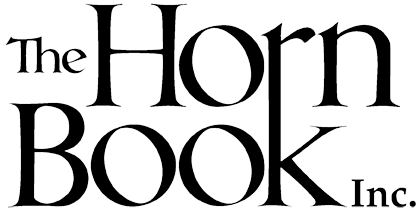Reality Reimagined: Fantasy vs. Reality
Fantasy is a broad genre (and broader still if you stretch the category to include science fiction). It can range from stories set firmly in real life with just the barest hint of the uncanny to those that take place in entirely imagined worlds or universes. Personally, I have always preferred to write the latter sort. There is nothing I like better than dreaming up unlikely magical or futuristic worlds. But such stories always work best, I think, if they keep at least a toehold in reality.

Fantasy is a broad genre (and broader still if you stretch the category to include science fiction). It can range from stories set firmly in real life with just the barest hint of the uncanny to those that take place in entirely imagined worlds or universes. Personally, I have always preferred to write the latter sort. There is nothing I like better than dreaming up unlikely magical or futuristic worlds. But such stories always work best, I think, if they keep at least a toehold in reality.
 I learned this lesson early from The Lord of the Rings, which was my favorite read when I was young and is again now that I’m old. Middle-earth is real to me; I know the landscape between Hobbiton and Rivendell as well as I know the hills of my home here in Devon. But that’s because it looks very much like the hills of Devon. It would have far less appeal if all its trees were elvish mallorns instead of oak, ash, and thorn, or if its inhabitants were all immortal heroes rather than fallible little fellows from a place recognizably based on the rural England of Tolkien’s youth. Nor would its battles be so believable or its shadows loom so dark if we did not sense behind them Tolkien’s own experience of war, and the darkness of the years in which he wrote.
I learned this lesson early from The Lord of the Rings, which was my favorite read when I was young and is again now that I’m old. Middle-earth is real to me; I know the landscape between Hobbiton and Rivendell as well as I know the hills of my home here in Devon. But that’s because it looks very much like the hills of Devon. It would have far less appeal if all its trees were elvish mallorns instead of oak, ash, and thorn, or if its inhabitants were all immortal heroes rather than fallible little fellows from a place recognizably based on the rural England of Tolkien’s youth. Nor would its battles be so believable or its shadows loom so dark if we did not sense behind them Tolkien’s own experience of war, and the darkness of the years in which he wrote.
So, when I started writing my first novel, Mortal Engines, I knew instinctively that the vast, mobile, future city where most of my characters lived would have to be London. I could easily have set the same story in an imaginary land, or on the surface of Mars, but I felt it needed an anchor in reality, and the familiar London place names and landmarks provided one. (The latest book in the series, Thunder City, does feature a purely fictional city, but it still trundles across a planet which is recognizably a far-future version of our own.)
Setting the Mortal Engines books in our own world also means that the characters can speak existing languages. (To construct convincing made-up ones you need Tolkien’s knowledge of philology and the patience to spend a lifetime on it.) And it allows me to pepper the story with names and phrases from our own culture. My pubs and airships often bear the names of books, paintings, or pop songs. Younger readers probably won’t pick up these references, but I feel they add an extra layer of texture to the world I’m imagining. Real life, after all, is full of references most of us don’t catch.
I’ve taken a similar approach in other books. The tiny archipelago where the Adventuremice live is grounded in reality thanks to lots of beautiful and highly detailed illustrations by my coauthor, Sarah McIntyre. My recent Utterly Dark trilogy also takes place on imaginary islands, but they can be reached fairly easily by ship from nineteenth-century England. As for the sprawling galactic empire in which Railhead is set, it languished unfinished in a heap of notebooks for years, until I realized that traveling the universe by spaceship isn’t nearly so interesting as making the same trip by train. The contrast between the familiar routines of rail travel and the alien planetscapes turned out to be the key to the whole story. (I think it was partly suggested by cheap British sci-fi shows of my youth, in which space tyrants ruled the galaxy from thinly disguised cement factories and 1960s office blocks. The gulf between the writers’ imaginations and the limits of the budget could be distracting while I was watching, but on the walk to school the next day the urban environment had acquired a weird
new glamour…)
It’s important to get the balance right, of course. Add too many contemporary details and you can end up in one of those ersatz fantasy worlds where everyone talks like teens on TikTok. But cram in too many strange new words and customs and the whole thing may drift away on a cloud of whimsy, with nothing for the reader to grab hold of. Like so much about the writing game, there are no hard and fast rules, and it mostly comes down to hitting the right tone.
But if it’s done well, the interplay between the real and the imaginary can result in stories that will resonate for a lifetime. Even now, whenever I’m walking in the woods and hills, I’m always at least partly in Middle-earth, half-expecting hobbits around every turn of the path. You look differently at trees when you’ve read about Ents. A dash of reality doesn’t simply make fantasy more believable; it also makes the real world more fantastic.
From the May/June 2025 special issue of The Horn Book Magazine: Perception and Reality. Find more in the "Reality Reimagined" series here.
 Single copies of this special issue are available for $15.00 including postage and may be ordered from:
Single copies of this special issue are available for $15.00 including postage and may be ordered from:
Horn Book Magazine Customer Service
magazinesupport@mediasourceinc.com
Full subscription information is here.

RELATED
ALREADY A SUBSCRIBER? LOG IN
We are currently offering this content for free. Sign up now to activate your personal profile, where you can save articles for future viewing.







Add Comment :-
Be the first reader to comment.
Comment Policy:
Comment should not be empty !!!